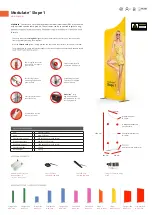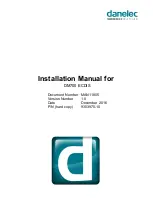
iColor Flex LMX gen2 Product Guide
11
DMX or Ethernet Control?
iColor Flex LMX gen2 installations can be controlled via either DMX or Ethernet.
DMX is appropriate for relatively simple installations, or for installations where all
lights operate in unison—for example, for accenting, perimeter lighting, or cove lighting
applications.
Each node in a strand of iColor Flex LMX gen2 is identified by a light number. A
light number corresponds to three sequential DMX addresses, one for red, one for
green, and one for blue. A DMX universe consists of 512 addresses, so the maximum
number of light numbers available in a DMX universe is 170 (170 x 3 = 510).
Because it is not subject to the DMX addressing limitations, Ethernet is the preferred
environment for dynamic, color-changing light shows and video displays, both of which
require large numbers of unique light numbers. In an Ethernet environment, each power/
data supply effectively acts as its own universe.
DMX installations require the use of a PDS-60ca 24V, sPDS-60ca 24V, or CM-150 CA
power/data supply, while the sPDS-480ca 24V power/data supply is Ethernet-only.
Considerations for Video Displays
In addition to the planning required for all iColor Flex LMX gen2 installations, planning
for video displays involves special considerations such as pixel pitch, minimum and
maximum viewing distances, sampling, and display resolution.
Determining Pixel Pitch and Viewing Distances for Video Displays
When using iColor Flex LMX gen2 strands to display video, each node acts as a pixel in
the display. Images on an LED video display appear to be sharper to the human eye as
the distance to the display increases. Likewise, images appear less visible as the distance
decreases. The spacing between pixels, known as the pixel pitch, determines the minimum
and maximum viewing distances for discernible video output. Pixel pitch is measured
center-to-center. For an iColor Flex LMX gen2 strand, you determine pixel pitch by
measuring from the center of one node to the center of the next.
Designing a layout with overlapping strands is a common technique for increasing pixel
pitch. For example, to create a dense line of nodes, place multiple runs close to each
other vertically, with a slight horizontal offset between the nodes. Philips offers strands
with both 102 mm (4 in) and 305 mm (12 in) spacing between nodes. Using strands with
made-to-order node spacing is another method for adjusting pixel pitch.
The following calculations and examples are general guidelines for determining minimum
and maximum viewing distances, based on video displays using grids of evenly spaced
pixels:
• To determine minimum viewing distance, multiply pixel pitch by 100 distance units.
For example, if the pixel pitch is 76 mm (3 in), the minimum viewing distance is
7.6 m (25 ft).
• To determine the maximum viewing distance for discernible video, multiply the screen
height by 20 distance units. For example, if the screen height is 20 m (65.6 ft), then
the maximum viewing distance for recognizable video is 400 m (1,312.3 ft).
• LED screens are visible beyond the maximum viewing distance for discernible video.
To determine the maximum viewing distance that still creates visual impact, multiply
the screen height by 50 units. For example, a screen 20 m (65.6 ft) high will continue
to create visual impact at 1,000 m (3,280.8 ft).
Measure from the center of one
node to the center of an adjacent
node to determine pixel pitch








































